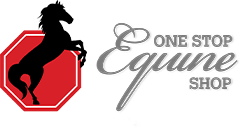Over the last five years I have learned (sometimes the hard way) what supplies I should have on hand in case of an emergency with my horse. In hopes of preventing you from being “S-O-L.”, as I have been plenty of times, I am going to lay out a few must have first aid items for your tack box. This blog post will be continued across a few blogs as there is much information to disseminate.
First, we need to discuss the basic items to have on hand, followed by more detailed blogs that will dive into how to utilize these tools for specific injuries such as deeper abrasions, puncture wounds, and abscesses.
Horseback riding is not just about riding, it is about being a well-rounded horse person. This includes all aspects of horse care from understanding how their digestive system and muscles work, to how to treat wounds and prevent infection. We want our beloved friends to stay happy and healthy, so we can keep riding!
The following items should be kept readily available since time should not be wasted searching for these supplies in case of an emergency. You can find most of these items at One Stop Equine Shop, the drugstore, or through your veterinarian.
- Mild Surgical Soap (Betadine)
- AluShield (Aluminum spray)
- Vet Wrap
- Syringes
- Gauze or Sheet Cotton
- Diapers
- Duct Tape
- Epsom Salt
- Poultice/Epsom Salt Poultice
- Liniment
- Clear Eyes/Saline Solution
If your horse comes in from the field with a new scrape or abrasion, you as a good horse parent must be prepared. As a basic rule of thumb, clean the wound with sterile sheet cotton and betadine first. If the wound is shallow and painless to the horse, spray the wound with AluShield to seal it and ensure that dirt cannot enter and disturb the healing process. This is for MINOR cuts and abrasions. If the wound is swollen, deeper, and painful, it is important to clean this thoroughly and call your veterinarian. Often, a cut will seem small, but actually be deeper than you thought. You want the vet to make sure the wound is not hitting vital tendons and rule out the risk of an infection.
Another good product to have in your tack box is Clear Eyes. This is a product that I did not know I needed until the time came when Herin had an irritated and swollen eye. Sometimes horses get dirt, dust, and hay particles in their eyes. When you notice an eye is tearing or swollen, rinse it out with Clear Eyes. If the problem resolves itself quickly, it was likely dirt particles or rubbing irritation. If the swelling is still present the following day, call the veterinarian immediately.
Helpful hint: If you are dealing with a more serious wound for the first time (or the third time), watch the vet closely. They are only there for a limited amount of time, and you want to be able to clean the wound the same exact way the vet did on your own. Stand over their shoulder and ask questions.
In the next few postings I will discuss care for puncture wounds and abscesses which will explain the uses for vet wrap, syringes, diapers, duct tape, and Epsom salt. Building up these supplies will help you when you least expect it. Horses are delicate creatures that somehow manage to get themselves hurt more often than we’d like! At the very least, having these items will give you a little peace of mind. These items may not stop the need for a veterinarian call but being able to deal with some basics yourself is always a good thing.
From one horse crazed human to another – Maria Holman

